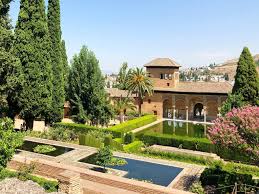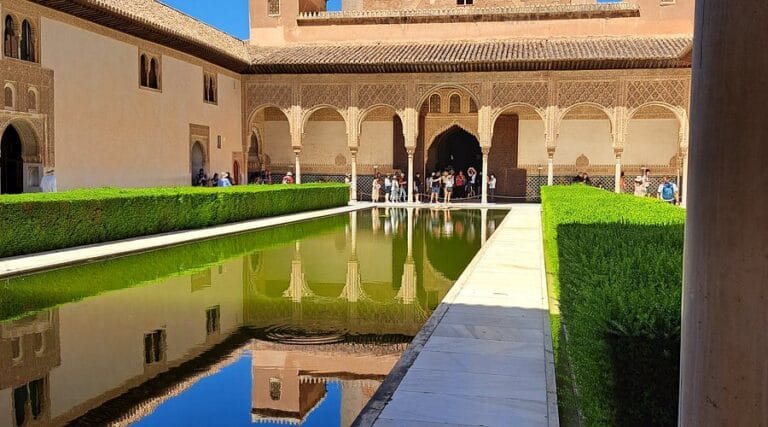Table of Contents
ToggleNestled on the scenic hills of Granada, Alhambra is the crown jewel of Moorish architecture in Spain and one of the most visited tourist attractions in Granada. Built by the Nasrid dynasty in the 13th century, this historic palace and fortress complex offers an unforgettable journey through medieval Islamic art, lush gardens, and panoramic views of the Sierra Nevada mountains.
Whether planning a trip to Spain or exploring Andalusia’s rich heritage, visiting the Alhambra Palace in Granada is essential. From the intricate designs of the Nasrid Palaces to the serene beauty of the Generalife Gardens, every corner of Alhambra tells a story of grandeur, culture, and architectural brilliance.
History and Significance of Alhambra
The Alhambra’s origins date back to 889 AD, when it served as a small fortress. It was expanded into a royal palace during the 13th and 14th centuries under the Nasrid rulers, becoming a symbol of Moorish power in Andalusia.
Key historical milestones:
Nasrid Dynasty Era: Transformation into a royal complex with palaces, fortifications, and administrative areas.
Reconquista Period (1492): Became a residence for Spanish royalty, blending Islamic and Christian artistic elements.
UNESCO World Heritage Site (1984): Recognized for its cultural, historical, and architectural value.
Add Your Heading Text Here
1. Nasrid Palaces
Features intricately carved stucco, colorful tiles, and wooden ceilings.
Includes famous halls like the Hall of the Ambassadors and the Court of the Lions.
Displays geometric patterns and arabesques, hallmark features of Islamic art.
2. Charles V Palace
Renaissance-style palace built after the Reconquista.
Contrasts with the Moorish design, showing the blend of two cultures.
3. Generalife Gardens
Summer palace with terraced gardens, fountains, and panoramic city views.
Designed for relaxation and aesthetic pleasure, reflecting harmony between nature and architecture.
Top Attractions within Alhambra

Court of the Lions: Central fountain supported by twelve marble lions, symbolizing strength and power.
Hall of the Ambassadors: Largest hall in the Nasrid Palaces with stunning ceilings and historical significance.
Partal Palace and Gardens: Offers tranquil pathways and reflective pools.
Generalife Gardens: Ideal for sunset views over Granada and photography enthusiasts.
Visitor Tips
Book Tickets Online: Alhambra is extremely popular; online booking ensures entry.
Timing: Visit early morning or late afternoon for fewer crowds and optimal lighting.
Guided Tours: Enhance your experience by learning about the symbolism, history, and architecture.
What to Wear: Comfortable shoes for walking, and light clothing in summer.



[…] Alhambra Granada: Spain’s Iconic Moorish Palace Guide […]
[…] Alhambra Granada: Spain’s Iconic Moorish Palace Guide […]
[…] is a city where Islamic art and Spanish history converge. The Alhambra Palace, a UNESCO World Heritage site, showcases stunning Moorish architecture. Granada’s charming […]